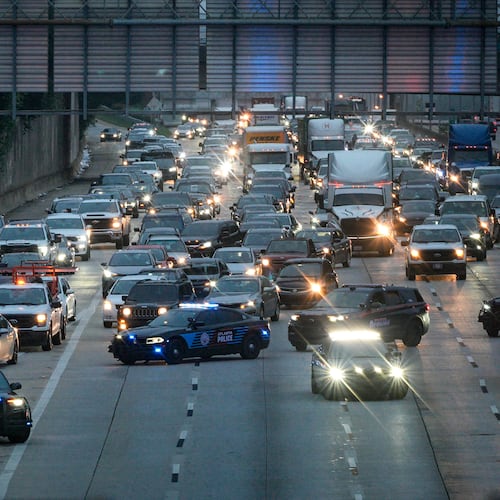MARTA plans a major redesign of its bus routes next year, and it’s asking customers to help it make tough choices.
The transit agency could provide more frequent service on its busiest routes, or it could provide less-frequent service to a broader area. Either choice involves trade-offs for hundreds of thousands of people who use its buses.
MARTA is seeking public input on those trade-offs at a series of hearings beginning this month. With that feedback, it will re-examine every bus route with an eye toward implementing significant changes by the end of 2022.
“You have a finite budget, and you have a certain number of buses and operators,” said Heather Alhadeff, MARTA’s assistant general manger of planning. “How do you spread that around?”
Before the coronavirus pandemic, MARTA had 110 routes that provided more than 4 million passenger trips per month in Clayton, DeKalb and Fulton counties and the city of Atlanta. COVID-19 upended its service — the agency eliminated most bus routes for about a year, providing more frequent service on its busiest routes to allow passengers to spread out and avoid spreading the disease.
MARTA restored full bus service in the spring. But ridership remains about half what it was before the pandemic.
Now MARTA wants to rethink its bus service. Alhadeff said the goal is not to save money — the redesign will be budget-neutral. Instead, she said the goal is to make service more efficient and ensure it’s meeting the needs of customers.
MARTA will present the public with two hypothetical scenarios for consideration. The first involves something like what it provided during the pandemic — more frequent service on its busiest routes, but with fewer routes. Under that scenario, MARTA would cut the number of routes from 110 to 52. But 25 of those routes would provide service at least every 15 minutes — up from eight under the old system.
As customers found out during the pandemic, that would mean longer walks to bus stops for many people.
“You might have to walk a bit further, but you won’t have to wait as long once you get there,” Alhadeff said. “That’s the kind of trade-off we want people to think about.”
The other scenario MARTA will present is similar to existing service: It would have 108 routes — including some service to new areas — but only eight of them would run every 15 minutes. Service on the rest of the routes would operate every 30 to 60 minutes.
MARTA stressed that it is not proposing either of these scenarios as a final plan. Instead, it’s proposing two extremes to encourage people to understand how the trade-offs might affect them.
The agency has scheduled four in-person hearings this month to solicit public feedback. In December it will present the same scenarios in a series of online meetings. It also will conduct an online survey on its website until mid-January.
With that feedback, MARTA will prepare a recommended plan for consideration by its board of directors next summer.
Which route will MARTA take?
MARTA wants public input as it seeks to redesign its bus routes. It will host a series of meetings on the issue:
- 11 a.m. Tuesday at the Andrew & Walter Young Family YMCA, 2222 Campbellton Road, Atlanta.
- 6 p.m. Tuesday at the Andrew & Walter Young Family YMCA, 2222 Campbellton Road, Atlanta.
- 6 p.m. Thursday at the Decatur Conference Center, 130 Clairemont Ave., Decatur.
- 11 a.m. Nov. 13 at Stage Door Theatre, 5339 Chamblee Dunwoody Road, Dunwoody.
More information: www.itsmarta.com.
About the Author
The Latest
Featured


